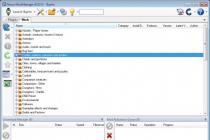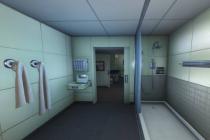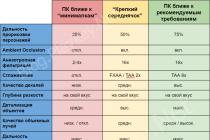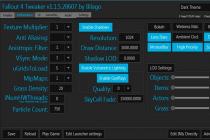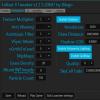Information about the make, model, and alternative names of a particular device, if any.
Design
Information about the dimensions and weight of the device, presented in different units of measurement. Used materials, suggested colors, certificates.
| Width Width information refers to the horizontal side of the device in its standard orientation during use. | 63.8 mm (millimeters) 6.38 cm (centimeters) 0.21 ft 2.51in |
| Height Height information refers to the vertical side of the device in its standard orientation during use. | 125 mm (millimeters) 12.5 cm (centimeters) 0.41ft 4.92in |
| Thickness Information about the thickness of the device in different units measurements. | 11.5 mm (millimeters) 1.15 cm (centimeters) 0.04ft 0.45in |
| Weight Information about the weight of the device in different units of measurement. | 127 g (grams) 0.28 lbs 4.48oz |
| Volume Approximate volume of the device, calculated from dimensions provided by the manufacturer. Refers to devices with the shape of a rectangular parallelepiped. | 91.71 cm³ (cubic centimeters) 5.57 in³ (cubic inches) |
| Colors Information about the colors in which this device is offered for sale. | The black White |
| Housing materials The materials used to make the body of the device. | Plastic |
SIM card
The SIM card is used in mobile devices to store data that certifies the authenticity of mobile service subscribers.
Mobile networks
A mobile network is a radio system that allows multiple mobile devices to communicate with each other.
Mobile technologies and data rates
Communication between devices in mobile networks is carried out through technologies that provide different data transfer rates.
Operating system
The operating system is the system software that manages and coordinates the operation of the hardware components in the device.
SoC (System on a Chip)
System on a chip (SoC) includes all the most important hardware components of a mobile device in one chip.
| SoC (System on a Chip) System on a chip (SoC) integrates various hardware components such as processor, graphics processor, memory, peripherals, interfaces, etc., as well as the software necessary for their operation. | Spreadtrum SC7731G |
| Technological process Information about the technological process by which the chip is made. The value in nanometers measures half the distance between the elements in the processor. | 28 nm (nanometers) |
| Processor (CPU) The main function of the processor (CPU) of a mobile device is the interpretation and execution of instructions contained in software applications. | ARM Cortex-A7 |
| Processor bit depth The bit depth (bits) of a processor is determined by the size (in bits) of registers, address buses, and data buses. 64-bit processors have higher performance than 32-bit processors, which, in turn, are more productive than 16-bit processors. | 32 bit |
| Instruction Set Architecture Instructions are commands by which the software sets/controls the operation of the processor. Information about the instruction set (ISA) that the processor can execute. | ARMv7 |
| First level cache (L1) Cache memory is used by the processor to reduce access time to more frequently accessed data and instructions. L1 (level 1) cache is small and much faster than both system memory and other cache levels. If the processor does not find the requested data in L1, it continues to look for them in the L2 cache. With some processors, this search is performed simultaneously in L1 and L2. | 32 kB + 32 kB (kilobytes) |
| Second level cache (L2) L2 (level 2) cache is slower than L1, but in return it has a larger capacity, allowing more data to be cached. It, like L1, is much faster than system memory (RAM). If the processor does not find the requested data in L2, it continues to look for it in the L3 cache (if available) or RAM. | 512 kB (kilobytes) 0.5 MB (megabytes) |
| Number of processor cores The processor core executes program instructions. There are processors with one, two or more cores. Having more cores increases performance by allowing many instructions to be executed in parallel. | 4 |
| Processor clock speed The clock speed of a processor describes its speed in terms of cycles per second. It is measured in megahertz (MHz) or gigahertz (GHz). | 1200 MHz (megahertz) |
| Graphics Processing Unit (GPU) Graphics Processing Unit (GPU) handles calculations for various 2D/3D graphic applications. IN mobile devices it is used most often by games, consumer interface, video applications, etc. | ARM Mali-400 MP2 |
| Number of cores GPU Like the CPU, the GPU is made up of several working parts called cores. They handle the graphical calculations of different applications. | 2 |
| GPU clock speed The speed of work is clock frequency GPU, which is measured in megahertz (MHz) or gigahertz (GHz). | 400 MHz (megahertz) |
| Volume random access memory(RAM) Random access memory (RAM) is used by the operating system and all installed applications. Data stored in RAM is lost when the device is turned off or restarted. | 512 MB (megabytes) |
Built-in memory
Each mobile device has a built-in (non-removable) memory with a fixed amount.
Memory cards
Memory cards are used in mobile devices to increase the storage capacity for storing data.
Screen
The screen of a mobile device is characterized by its technology, resolution, pixel density, diagonal length, color depth, etc.
| Type/technology One of the main characteristics of the screen is the technology by which it is made and on which the image quality of information directly depends. | TFT |
| Diagonal For mobile devices, the screen size is expressed in terms of its diagonal length, measured in inches. | 4 in 101.6 mm (millimeters) 10.16 cm (centimeters) |
| Width Approximate Screen Width | 2.06in 52.27 mm (millimeters) 5.23 cm (centimeters) |
| Height Approximate Screen Height | 3.43in 87.12 mm (millimeters) 8.71 cm (centimeters) |
| Aspect Ratio The ratio of the dimensions of the long side of the screen to its short side | 1.667:1 5:3 |
| Permission Screen resolution indicates the number of pixels vertically and horizontally on the screen. Higher resolution means sharper image detail. | 480 x 800 pixels |
| Pixel Density Information about the number of pixels per centimeter or inch of the screen. Higher density allows information to be shown on the screen in clearer detail. | 233 ppi (pixels per inch) 91ppm (pixels per centimeter) |
| Color depth Screen color depth reflects the total number of bits used for the color components in a single pixel. Information on the maximum number colors that the screen can show. | 24 bit 16777216 flowers |
| Screen area Approximate percentage of screen space on the front of the device. | 57.29% (percentage) |
| Other characteristics Information about other functions and features of the screen. | capacitive Multitouch |
Sensors
Different sensors perform different quantitative measurements and convert physical indicators into signals that are recognized by the mobile device.
rear camera
The main camera of a mobile device is usually located on the back of the device and can be combined with one or more secondary cameras.
| Sensor type Information about the type of camera sensor. Some of the most widely used types of sensors in mobile device cameras are CMOS, BSI, ISOCELL, etc. | CMOS (complementary metal-oxide semiconductor) |
| Flash type The rear (rear) cameras of mobile devices mainly use LED flashes. They can be configured with one, two or more light sources and vary in shape. | LED |
| Image resolution One of the main characteristics of cameras is resolution. It represents the number of horizontal and vertical pixels in an image. For convenience, smartphone manufacturers often list resolution in megapixels, giving an approximate number of pixels in millions. | 2592 x 1944 pixels 5.04 MP (megapixels) |
| Video resolution Information about the maximum video resolution that the camera can record. | 1920 x 1080 pixels 2.07 MP (megapixels) |
| Video recording speed (frame rate) Information about the maximum recording rate (frames per second, fps) supported by the camera at maximum resolution. Some of the most basic video recording speeds are 24 fps, 25 fps, 30 fps, 60 fps. | 30 fps (frames per second) |
| Characteristics Information about additional software and hardware features of the rear (rear) camera. | digital zoom panoramic shooting Self-timer |
Front-camera
Smartphones have one or more front cameras of various designs - a pop-up camera, a PTZ camera, a cutout or hole in the display, a camera under the display.
Audio
Information about the type of speakers and audio technologies supported by the device.
Radio
The radio of the mobile device is a built-in FM receiver.
Location determination
Information about navigation and location technologies supported by the device.
WiFi
Wi-Fi is a technology that provides wireless communication for short distance data transmission between different devices.
Bluetooth
Bluetooth is a standard for secure wireless data transfer between different types of devices over short distances.
USB
USB (Universal Serial Bus) is an industry standard that allows different electronic devices to communicate.
Headphone jack
This is an audio connector, which is also called an audio jack. The most widely used standard in mobile devices is the 3.5mm headphone jack.
Connecting devices
Information about other important connection technologies supported by the device.
Browser
A web browser is a software application for accessing and viewing information on the Internet.
Video file formats/codecs
Mobile devices support various video file formats and codecs, which store and encode/decode digital video data, respectively.
Battery
Mobile device batteries differ from each other in their capacity and technology. They provide the electrical charge they need to function.
| Capacity The capacity of a battery indicates the maximum charge it can store, measured in milliamp-hours. | 1400 mAh (milliamp-hours) |
| Type The type of battery is determined by its structure and, more specifically, by the chemicals used. Exist different types batteries, with lithium-ion and lithium-ion polymer batteries most commonly used in mobile devices. | Li-Ion (Li-Ion) |
| 2G standby time The 2G standby time is the amount of time it takes for the battery to fully discharge when the device is in stand-by mode and connected to a 2G network. | 154 h (hours) 9240 min (minutes) 6.4 days |
| 3G standby time The 3G standby time is the amount of time it takes for the battery to fully discharge when the device is in stand-by mode and connected to a 3G network. | 160 h (hours) 9600 min (minutes) 6.7 days |
| Characteristics Information about some additional features of the device's battery. | Removable |
The modern market of smartphones and other electronic innovations is flooded with offers, the cost of which varies dozens of times. There is a frankly premium segment, designed to emphasize the status of a person, but most users do not need too expensive cutting-edge devices. Then state employees come into play, the price of which is quite acceptable for most ordinary citizens. They also differ in their capabilities, and if you need a device only for making calls and messaging, then one of the options would be ZTE Blade AF 3, the characteristics of which we will consider in detail in this article. However, some characteristics to add up a complete picture of the gadget will not be enough, so they will be supplemented by analysis real reviews, showing how worth this model is and whether it is worth buying for personal use. Let's start with the contents of the package.
Contents of delivery
When purchasing a ZTE Blade AF 3 smartphone in a store, you get a packed white box made of thick cardboard. It has a minimalistic design that, on the one hand, emphasizes the budget component of the gadget itself, and on the other hand, it is designed to show that it will be easy to handle it.
Inside it you can find a standard set of accessories for all state employees. Behind the separator under the phone are located Charger and a USB cable for transferring files and data, as well as charging your smartphone. The battery comes in a separate bag and is also located in its designated place in the box. This is where the accessories end. The kit is supplemented by brief instructions for disassembling the gadget for installing cards and a warranty card. In general, we can say that the manufacturer tried to make the ZTE Blade AF 3 smartphone as cheap as possible, reviews of which we will analyze at the end of the article, and give the buyer a choice of which additional accessories to buy and use in the future.
Body and appearance
The smartphone comes in two colors - black and white. Some users note that it looks like an early iPhone, thanks to the design of the front side, which has a round touch button in the center of the lower part, giving a peculiar resemblance. But this is where the common features of these gadgets end, because we still have the usual budget model ZTE Blade AF 3, the price of which does not exceed 3,000 rubles, unlike a premium smartphone from a well-known manufacturer.
The case is completely made of high-quality plastic. The latches hold the lid firmly, and some users even had to open it for the first time with tools, or carefully pry it off bank card. Therefore, you can not worry that the case will creak or dangle. True, there is a chance that it will not be so easy to install the battery and cards.
The back cover, although made of ordinary plastic, looks quite attractive due to its structure. It is stylized under the skin, which gives not only a pleasant appearance, but also facilitates the use of a smartphone, because it lies confidently in the hand and does not slip.
There is a camera and an LED flash on the back that can be used as a flashlight. It cannot be called particularly powerful, but in order to insert the keys into the door or just walk along the dark entrance, it will be quite enough. On the bottom of the cover are slots for the speaker. A distinctive feature is a small protrusion in this place, so even if you put the phone on the table, the sound will still be heard well and it will not be distorted. In most budget models, manufacturers for some reason forget to add such a useful little thing.
On the front there is a TFT display, through which an image is displayed for the user of ZTE Blade AF 3. The touchscreen is quite responsive, and it is pleasant to control the system with it, the accuracy is enough for quick typing on the on-screen keyboard.
With side walls stylized as metal, there are no questions. On the right side, there is a power button and a volume rocker, the upper one received headphone and charging jacks, the lower one is content with a microphone hole, and the left one remained completely free. This moment may especially appeal to those who want to buy a flip-to-left flip case for their ZTE Blade AF 3 smartphone, because there are no controls in place of the “binding”.

Processor and performance
The gadget received an ultra-budget SoC from the well-known manufacturer Spreadtrum. This is a modification of the SC7731G, which has 4 cores with ARMv7 architecture, each of which operates at a frequency of up to 1.2 GHz. All cores use shared cache processor of the second level, the volume of which is 512 kB. For graphics processing, the Mali-400 MP2 integrated video subsystem is used, which can handle rendering system interface and some undemanding games.
To ensure the operation of programs, 512 MB of RAM is used. Of course, by modern standards, this is very small, and yet this size is quite enough if you are not going to use your smartphone for anything other than calls and correspondence, since even simple surfing the Internet will be accompanied by freezes, especially if you try to open several at once. tabs in the browser, or run more than one program at the same time. This should be taken into account when choosing, so that later it does not turn out that the characteristics are not enough to perform the work planned before the purchase. In standby mode immediately after booting, the ZTE Blade AF 3 firmware consumes only 160 MB of RAM, which shows that the manufacturer's interface is well-developed and lightweight especially for such low performance.
According to the results of testing using the Antutu synthetic benchmark test, the smartphone can score more than 16 thousand points. This is a pretty good indicator for a gadget costing less than 3 thousand rubles.
Operating system
The device is running an outdated, but still supported version of Android 4.4.2. At one time it was distinguished by stability and low consumption. system resources, and this is more than ever required for low performance. After turning on, you can see the proprietary smartphone interface developed by ZTE. It consists of several desktops with application shortcuts located on them. A separate menu where all programs could be placed, as in most modern gadgets, is not provided.
A nice feature is a small amount of pre-installed software from the manufacturer. And even then, most of the programs that come out of the box are not system ones and can be removed. And if you don’t like the firmware installed from the factory on the ZTE Blade AF 3, then welcome to thematic forums where they can tell you how to reflash your phone and make it shine with new colors of the interface.

Data storage
Of course, in the process of using a smartphone, a variety of multimedia files and software components. You can store them in the built-in memory, but it is rather modest - its volume is 4 GB in the ZTE Blade AF 3. In addition, do not forget that at least half of the space on it is occupied by the firmware. In order to use the smartphone comfortably, it is recommended to immediately purchase a micro-SD memory card high class and up to 32 GB. Then you will never be left without free space if you suddenly need to urgently download some heavy file or shoot a video. In addition, the system allows you to transfer part of the data of almost all programs to the card, which can also help clear up the built-in space a little.
Photo and video shooting
The cameras in this model, of course, will not work wonders. This is immediately clear from the fact that the main camera, which received a 5-megapixel matrix, simply does not have autofocus. This means that even when good lighting Photos will not be very clear and noisy. However, this will be quite enough to take a picture, for example, text document, or just take a picture of the place you have visited as a keepsake.
In fairness, it should be noted that in some cases, other manufacturers who claim that they also have cameras with a resolution of 5 MP, the photos are much worse than the model in question. This indicates that a good, albeit budget, matrix has been installed.
Oddly enough, but with such modest characteristics, the smartphone is able to record video with high resolution. Just keep in mind that it takes up quite a lot of space, so if you don't need that kind of quality, it's a good idea to set the average values, especially if you shoot a lot of videos.
The front camera received a simple 2 MP matrix. It is enough for taking selfies in very good lighting or video calls, but no more. It is not recommended to shoot video on it, because the quality will be quite low. As the reviews left by users regarding the ZTE Blade AF 3 show, they are not enthusiastic about the cameras.

Sound
To play melodies and signals, a speaker is used, located at the bottom of the phone. It gives a clear sound with slightly elevated mids. Depending on the genre of the track and the sounding instruments, characteristic wheezing may appear at maximum volume.
You should not take expensive headphones, since the audio path is very mediocre. Nevertheless, listening to music is quite comfortable, and the built-in programs for improving the sound quality in headphones will achieve an acceptable result. Having opened the settings on your ZTE Blade AF 3, you can easily find the “Sound” section, in which all you have to do to improve the sound in the headphones is to put the necessary checkmarks.
Wireless capabilities
The smartphone received a standard set for any state employee. Of course, first of all, he can call and send messages via the mobile network. It is possible to use 2G and 3G networks, but 4G connection will no longer work - iron cannot work with such frequencies.
There is also a GPS module, through which you can navigate the terrain using a navigator program. Well, of course, Wi-Fi and Bluetooth communication modules are installed, so there should be no problems with the Internet and connecting all kinds of headsets. The instructions that come with the ZTE Blade AF 3 explain how to use all these modules.

Battery and autonomy
Perhaps the battery can be called one of the weakest points of this smartphone. The ZTE Blade AF 3 has a battery capacity of only 1400 mAh, which means that with active use, the smartphone will not last all day, it will need to be recharged. So, at maximum load, the manufacturer promises only up to 5 hours of continuous operation. But in standby mode, you can count on at least 150 hours, which is a good indicator. Therefore, if you plan to use it exactly as a “dialer”, then this problem should not be felt.
In other cases, a good solution to the problem would be to purchase a small but high-quality portable battery. Even a 5,000 mAh power bank is enough to fully charge this smartphone three times, so this option should not be ruled out or considered too inconvenient.
This was information from the manufacturer ZTE Blade AF 3. The review can help in the choice, but it is not enough. You can fully evaluate the phone according to the reviews of users who have already had the opportunity to operate it for some time. Let's start with the good - the positive aspects of this gadget.

Positive user reviews
Buyers' opinions are divided. This is not surprising, since the gadget has a very low cost and, as a result, very limited capabilities. Those who understood this before making a purchase were completely satisfied, while others complain about points that are obvious and come from the fact that the performance of the ZTE Blade AF 3 is low by modern standards. Therefore, it was quite difficult to choose certain moments that everyone would like, but nevertheless it turned out to be done. Among the clear advantages are the following:
- Nice design. Many note that a well-thought-out appearance not only visually increases the cost of a smartphone, but also makes it more practical. ZTE Blade AF 3, whose touchscreen resembles an iPhone, fits comfortably in the hand and is made soundly, which allows you not to worry about it when falling from a small height, even on hard surfaces, since the durable case does not crumble from light blows.
- Acceptable operation of the system interface. As long as the smartphone does not have a large number of programs running in the background, the interface works quite smoothly. Even later, when there is less and less free RAM, and small freezes appear, they will not be too annoying. Still, do not forget that the ZTE Blade AF 3 has budget characteristics, and this is done to save money for buyers.
- compactness. Today it is difficult to find devices with acceptable performance and a diagonal of less than 4.5 inches. The same smartphone broke all records thanks to its 4-inch screen, and is perfect for those who want to get a truly compact device.
- Simplicity. Due to the absence of unnecessary applications and functions, even a person who is far from technology will be able to master the use of a smartphone.
- Price. First of all, ZTE Blade AF 3, the price and quality of which are in good balance, takes precisely the low cost, because you can find a smart with more or less modern characteristics for a price less than 3 thousand rubles is almost unrealistic.
These are the main advantages that can be heard from almost all users of this gadget. However, it has a rather weighty list of cons, which are also worth paying attention to.

The negative aspects of the smartphone according to users
So, the negative aspects of the buyers of this gadget include the following:
- Weak battery. Perhaps this aspect deserves to be the first, since the battery is really not enough even for a day of use, if the phone is planned to be used not only for calls. You can solve the problem with a portable battery.
- Poor camera quality. Photos are very mediocre, since there is no autofocus and budget matrices are used.
- Quiet speaker. Not all users have encountered this problem, but there are quite a few complaints that the ZTE Blade AF 3 phone is not audible if you are in a public place. This problem can no longer be solved, although you can try to adapt to the call notification through vibration.
- No alarm. Many users could not find the built-in alarm clock in the firmware, as a result of which they had to download a separate third party application from the store.
- A small amount of internal memory . If you plan to install large applications, then this can also become a problem. In fairness, it should be noted that the memory is not divided into blocks "for applications" and "virtual flash card", so all the free space out of the box can be used to install programs, which at least slightly brightens up this minus.
Output
The smartphone has received controversial reviews, so when deciding to buy it, you should carefully weigh all the nuances. This will allow you to soberly assess its capabilities and subsequently not be disappointed in your own acquisition.
So, this model can be great for a child or an elderly person, as it is easy to use and does not require special skills in handling equipment. It can be ideal for those who want to get a second phone just for calls, since the device has small dimensions and can allow you to synchronize data through a shared account.
If the listed set of cons is not a problem for you, and all the characteristics inherent in ZTE Blade AF 3 suit you, then buying such a smartphone will great solution to save the family budget. And at the same time get a pretty good thing.
ZTE Blade AF3 budget novelty with a 4-inch screen and support for two active sim cards at an affordable price. The smartphone is assembled in a compact body and is equipped with a 4-core processor with a frequency of 1200 MHz and a GPS navigation function. ZTE Blade af3 works on the Android operating system, there is high-speed 3G Internet up to 10 Mbps and wireless technology WiFi.
Main Features of ZTE Blade AF3: two SIM cards Micro-SIM + Micro-SIM, 4-inch screen, operating android system 4.4, quad-core ARM processor Cortex A7 Quad-core 1200 MHz, accumulator battery 1400 mAh, 5 MP camera, 4 GB built-in memory and 512 MB RAM.
Support for two SIM cards on ZTE Blade AF3 allows the user to use his phone for both work and personal calls, it is also possible to use one SIM card for calls, and the second for the Internet. Built-in memory ZTE Blade AF3 is 4 GB, expandable with a Micro SD memory card up to 32 GB. Thanks to the presence GPS module the owner of Blade AF 3 will be able to use the phone as a real navigator. Great smartphone for those who want to buy an android smartphone for two SIM cards at a low price, compact body, 4 inch screen and proven operating system Android allows the user to comfortably control the phone with one hand.
full specs, and Blade AF3 user reviews see below.
- Do you know the pros and cons of ZTE Blade af 3, do you have additional information or useful tips?
- Please add a review and help others make the right choice.
- Thanks for the responsiveness and useful information!!!
Full specifications of ZTE Blade AF3. ZTE Blade af3 specifications.
- Sim card quantity: 2 sim cards/ alternating
- SIM card format: Micro-SIM/ Micro-SIM
- Body material: plastic
- Operating system: Android 4.4
- Processor: 4-core 1.2 GHz
- Screen: 4.0 inch TFT/ 480 x 854/ 233 ppi display
- Camera: 5 MP / Flash
- Front camera: 2 MP
- Video camera: video recording
- Battery: 1400 mAh
- Talk time:
- Standby time:
- Built-in memory: 4 GB
- RAM memory: 512 MB
- Memory card: Micro SD up to 32 GB
- DLNA: yes
- Bluetooth: 2.1+EDR
- WiFi: yes
- Wi-Fi hotspot: yes
- Navigation: GPS
- 3G: support
- 4G LTE: -
- Sensors: accelerometer / light / proximity
- Muses. player: yes
- Radio: FM radio
- Flashlight: yes
- Speakerphone: yes
- Dimensions: (H.W.T) 125 x 63.8 x 11.5 mm.
- Weight: 127
How to update the software?
We provide you different ways software updates, namely: updating with a memory card or updating "over the air".
To update "over the air" you need to connect to a wireless network Wi-Fi or GSM Internet connection and check for updates in the settings.
What should I do if the operating time of the device does not match the operating time declared by the manufacturer?
Smartphone is complicated electronic device, which includes the functions pocket computer And cell phone and consumes a lot of power to operate these functions. The main amount of energy is spent on the operation of the display module and the GSM transceiver path. The display brightness is automatically set to maximum when it is very bright. environment(sunny day) or set by the user in manual mode. Maximum brightness consumes maximum power. When working with GSM and with stable and stable reception "at the maximum", the device consumes the minimum amount of energy to maintain communication. In the case of unstable and weak signal network, the machine requires more power to maintain communication. In the case of "Network search" in the area of the absence of a network, the device consumes the maximum amount of energy that is spent on searching for the nearest base stations. To reduce the energy consumed by the phone, you need:
1. Disable GPS if not required.
2. Disable Mobile Internet if it's not needed.
3. Disable or remove unnecessary unused applications, because. they are active and consume the internal resources of the device.
What should I do if the phone freezes, does not turn on or reboots?
The reason for the reboot or freeze in most cases is third-party software or programs.
1. Initially, we recommend that you restore the factory default settings (after saving the information you need). If the phone turns on, select the "factory reset" function in the device menu. If the machine does not turn on, turn on the machine in " recovery mode" and select "wipe data/factory reset". How to enable "Recovery mode" is described below in "How to enter Recovery mode?".
2. If factory reset does not help, update the software. The ways to update the software are described in "How to update the software?".
3. If the software update does not help, contact your nearest Authorized Service center ZTE.
How to do backup save data, notebook or back-up?
There are 3 ways to make a "backup":
1. In the phone settings, in the "Backup and Reset" submenu, check the box for recovery.
2. You can transfer necessary information to a computer using USB cable.
3. You can make a "back up" using a third party program.
What should I do if I do not remember the password or pattern to unlock the screen?
If you have forgotten the pattern or digital password to unlock the screen, you need to perform a factory reset procedure: 1. Turn on the device in "Recovery mode" and select "wipe data / factory reset". 2. If the procedure fails, please contact a ZTE Authorized Service Center.
How to use wireless networks (Wi-Fi, BT)?
1. Turn on Wi-Fi in the device settings. Click on the Wi-Fi icon and you will be taken to the Wi-Fi network management screen.
2. The device will automatically search for active WiFi networks in the access zone from 5 to 50 meters to the access point (depending on the power of the access point).
3. Select the network you need and click on it. If wireless network password protected, enter it.
4. After connecting to desired network Wi-Fi icon will appear on the main screen of the device.
How to enable Internet distribution on the phone (USB modem or wifi router)?
There are two ways to enable Internet sharing on your phone. The first way is to turn on the distribution as a USB modem, the other is to turn on the distribution as a WiFi router. Make sure that your device has access to the Internet in order to distribute it:
1. USB modem - the method is used to distribute the Internet to a computer. Connect your phone to your computer using a USB cable and allow data access. "Settings->Wireless networks->More" Modem mode - check USB modem. "Then the phone will start distributing the Internet to the computer. To stop distributing, uncheck the USB modem or simply disconnect the cable connection.
2. WiFi router - make sure you have a stable internet connection via mobile network or USB. "Settings->Wireless networks->More" Modem mode - check the box "WiFI access point". For guard wireless connection click on the hotspot icon then click "WiFi hotspot". This menu allows you to set a username and password for your wireless WiFi connection. Your phone will start working as a WiFi router. To stop the distribution, uncheck "WiFi router"
How can I quickly see the charging status?
While charging, press the power button. The battery charge status will be shown on the phone's main screen.
Why is the amount of free memory of the device less than stated by the manufacturer?
Unlike the processor, which has its own built-in memory, other devices, such as a video processor, an audio processor, and other devices included in the element base of the device's central board, consume user memory resources. Some amount of memory is pre-reserved for internal needs, but in case of overflow, user memory is used.
What types of machine lock can be used?
There are 3 types of screen lock. Select one of the lock types in Settings -> Security -> Screen lock.
1. Blocking graphic key
2.PIN lock 3.Password lock
What is the operating temperature of ZTE phones?
The operating temperature is in the range from (-10C) to (+50C).
What does ROOT mean?
ROOT is "administrator rights". ROOT allows you to change system files, change the system, install test programs and take other actions. ROOT rights are hidden from users, but can be activated if necessary.
Be careful, careless handling ROOT rights may harm your operating system.
How to enter recovery mode?
In the off state, hold down the volume button (increase +) and the power button at the same time.
What to do if the battery is not 100% charged?
The battery of the device is designed in such a way that it dissipates part of the received charge and can subsequently be charged again. This feature is designed to protect the battery and increase its performance. If the battery does not charge more than 80%, contact a ZTE Authorized Service Center.
How can I add Google account into the machine?
1. When you turn on your smartphone for the first time, you will be prompted to register new google account or use an existing one. But this is not a mandatory procedure.
2. To add an account at any time, you can register a new or use an existing account: Settings->Accounts and "add account".
How to enable USB debugging? How to get access to the "For Developers" menu?
Enter "Settings->About phone->tap several times on "Build number". Then you will be able to access the sub-menu "For developers". In this sub-menu, you can access "USB debugging" and other functions for developers
How to connect phone to PC?
To install the driver (automatically), do the following.
1. Connect your phone to your computer.
2. When connecting, select " Virtual Disk" or "Virtual CD" depending on the model.
3. The computer must determine additional disk, run "Autorun.exe" on it and install the driver
4. If the drivers are not installed, go to "Settings->For Developers" and enable the "Disk driver". (10 times click on "Build Version"
5. When enabled (USB debugging), the driver will also be automatically installed.
What do the letters E, G, H stand for?
When data transfer is active on the phone, the following symbols appear on the status bar (indication of signal reception, battery capacity, etc.):
- E stands for active work EDGE protocol
- G means active operation of the GPRS protocol
- H means active operation of the HSDPA protocol, which is part of WCDMA


